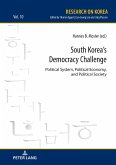Democratic transition is a very complex phenomenon. It relies on the outcome of the political competition between key actors during its initial stages, as well as on economic, social, and structural constraints inherited from the previous authoritarian regime. The book compares both series of factors by focusing on citizens' democratic engagement and on political elites' behavior. Despite a strong path-dependency to the previous authoritarian structures and low levels of initial democratic resources, citizens made proof of remarkable willingness to support democracy. By street protests, they even pressured political populist elites in power to abandon radical undemocratic regime changes. Romania managed therefore to maintain its European course and to avoid serious democratic backsliding.







